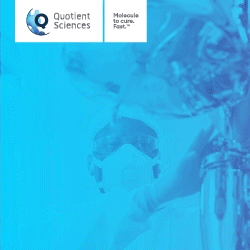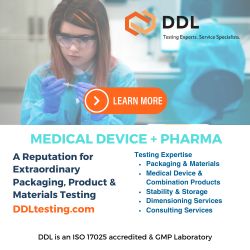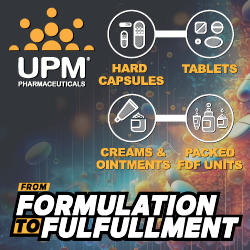Bio Platforms
CatalYm to Present Initial Data of First-in-Human Trial of GDF-15 Neutralizing Antibody CTL-002
CatalYm GmbH recently announced that their abstract with first interim data from the Phase 1 clinical trial investigation CTL-002 as monotherapy and in combination with…
Biogen & Envisagenics Announce Collaboration to Advance RNA Splicing Research
Biogen Inc. and Envisagenics recently announced a new collaboration to advance ribonucleic acid (RNA) splicing research within central nervous system (CNS) diseases….
Mustang Bio & City of Hope Announce First Patient Dosed in Phase 1 Clinical Trial
Mustang Bio, Inc. and City of Hope recently announced the first patient has been dosed in a clinical trial to establish the safety and feasibility…
Calithera Biosciences & Antengene Enter Worldwide License Agreement for Development & Commercialization of CB-708
Calithera Biosciences, Inc. and Antengene Corporation, Ltd. recently announced an exclusive, worldwide license agreement for the development and commercialization of CB-708, Calithera’s small….
Agenus & Bristol Myers Squibb Announce Exclusive Global License for Anti-TIGIT Bispecific Antibody Program
Bristol-Myers Squibb Company and Agenus Inc. recently announced they have entered into a definitive agreement under which Bristol Myers Squibb will be granted a global exclusive license to….
uniQure Presents HOPE-B Clinical Data Demonstrating Clinical Benefit in Hemophilia B Patients With Pre-existing Antibodies to AAV5 Vector
uniQure N.V. recently presented 26-week clinical data from the pivotal, Phase 3 HOPE-B gene therapy trial of etranacogene dezaparvovec showing clinical benefit in hemophilia B patients…
AC Immune Announces Expansion of Phase 1b/2a Phospho-Tau Alzheimer’s Vaccine Trial & Provides a Program Update
AC Immune SA recently announced the company and its strategic partner Janssen Pharmaceuticals, Inc. have expanded the ongoing Phase 1b/2a clinical trial of the companies’…
AzurRx BioPharma Announces Positive Interim Data in Phase 2 Clinical Trial
AzurRx BioPharma, Inc. recently announced positive interim data from the first 18 out of 20 patients in its Phase 2 trial evaluating MS1819 in combination with the current standard of care, porcine-derived pancreatic enzyme replacement therapy (PERT),….
Checkpoint Therapeutics Announces Completion of Enrollment in the Registration-Enabling Trial of Cosibelimab
Checkpoint Therapeutics, Inc. recently announced the completion of enrollment for the metastatic cutaneous squamous cell carcinoma (cSCC) cohort in its registration-enabling clinical trial of….
New Adjuvanted Vaccine Candidate Using IDRI Formulation Demonstrates Coronavirus Pan-Vaccine Potential
The Infectious Disease Research Institute (IDRI), Duke Human Vaccine Institute, and 3M have collaborated to create a vaccine candidate with potential to provide protection against multiple variants of SARS-CoV-2….
Centogene Extends Global Parkinson’s Disease Study
Centogene N.V. recently announced it has extended the Rostock International Parkinson’s Disease (ROPAD) Study…..
Cybrexa Therapeutics Announces First Patient Dosed in Phase 1/2 Clinical Trial
Cybrexa Therapeutics recently announced the first patient has been dosed in a Phase 1/2 clinical trial evaluating CBX-12 (alphalex-exatecan), the company’s lead therapeutic candidate. The…
OncoTEX & Sterling Pharma Solutions Sign Clinical Manufacturing Agreement
OncoTEX Inc and Sterling Pharma Solutions recently announced that they had signed a clinical development agreement for the manufacture of OncoTex’s novel platinum-resistant oncology drug…
Fortress Biotech Announces Exclusive License Agreement With Fuji Yakuhin
Fortress Biotech, Inc. recently announced it has entered into an exclusive licensing agreement with Fuji Yakuhin Co. Ltd. to develop Dotinurad in the US, UK,…
Biosight Completes Enrollment in Phase 2b Study for First-Line Acute Myeloid Leukemia Therapy
Biosight Ltd. recently announced it has completed enrollment in the company’s ongoing Phase 2b trial evaluating aspacytarabine (BST-236) as a single-agent first-line acute myeloid leukemia…
Altimmune Announces New Preclinical Data for AdCOVID Demonstrating Sterilizing Immunity After a Single Intranasal Dose
Altimmune, Inc. recently announced positive results from a preclinical study of AdCOVID in a SARS-CoV-2 challenge model of infection. In this study, a single intranasal…
Takara Bio Europe AB & PanCryos Announce Licensing Agreement to Enable Development of Cell-Based Therapy for Diabetes
Takara Bio Europe AB (TBEAB) and PanCryos recently announce they have reached a licensing agreement surrounding TBEAB’s clinical-grade human embryonic stem (hES) cell lines…..
Catalent Acquires Additional Facility at its Gosselies, Belgium, Campus for Commercial-Scale Plasmid DNA Manufacturing
Catalent and Promethera Biosciences recently announced that Catalent has acquired Promethera’s cell therapy manufacturing subsidiary, Hepatic Cell Therapy Support SA (HCTS), including its….
Scipher Applies Spectra Platform to Discover Drugs Targeting Autoimmune Patients Refractory to Existing Therapies
Scipher Medicine recently announced the launch of Scipher Therapeutics, focused on discovering new targets and drugs for patients not responding to approved therapies in the…
Cocrystal Pharma Provides Update on its COVID-19 Antiviral Discovery & Development Programs
Cocrystal Pharma, Inc. recently announced progress in developing broad-spectrum antiviral drug candidates that target coronaviruses including SARS-CoV-2, the coronavirus that causes COVID-19. Cocrystal initiated its…
What are Bio Platforms?
Platforms (or asset-independent technologies to capture all kinds of capabilities that can be leveraged across many different drug candidate assets rather than just discovery tools that the term ‘platform’ immediately brings to mind) are ubiquitous in modern pharma. They are the product of an arms race, to secure access to the best capabilities in key areas.
Platform technologies are considered a valuable tool to improve efficiency and quality in drug product development. The basic idea is that a platform, in combination with a risk-based approach, is the most systematic method to leverage prior knowledge for a given new molecule. Furthermore, such a platform enables a continuous improvement by adding data for every new molecule developed by this approach, increasing the robustness of the platform.
But it has often been said that access to the latest technological platforms to aid efficient drug discovery and development is limited to Big Pharma, which can more easily justify the costs of creating and operating these platforms.
Benefits of Bio Platforms
Platform technologies have the ability to radically improve upon current products and generate completely novel products. In this sense, they open up new arenas for drug discovery and development, potentially increasing the number of therapeutic options for patients. Once a single compound or therapeutic has been generated and demonstrates a clinical benefit in patients, it is more likely this platform technology can successfully be applied to other therapeutic areas, derisking future compounds/products.
Complex drugs by their very nature are challenging and costly to manufacture. This, in turn, translates into higher costs for patients and other payers. In order to provide safe and effective therapies at a reasonable price, it is necessary for the industry to develop manufacturing technologies that reduce costs and provide a consistent product. While the initial investment may be larger, manufacturing costs will be lower over time as the manufacturing process is solidified.
Scale and Investment of Bio Platforms
Despite the initial upfront costs, platform technologies inevitably provide pragmatic solutions to production challenges, while yielding safer and more effective therapeutic products. It has often been said that one of the key features that distinguishes “Big Pharma” from biotech is access to the latest technological platforms to aid efficient drug discovery and development.
These platforms range from vast chemical libraries, ultra-high throughput screening and huge genetic databases in discovery, to predictive toxicology platforms, cutting-edge ‘omics’ and even deep-seated knowledge of particular therapeutic areas in development. All these platforms have two things in common: They can be used on any (or many) development candidate assets, and they cost huge sums to establish in the first place, and in a few cases each time they are used as well. Hence their restriction to the largest pharmaceutical companies (and a few of the so-called “big biotechs” that are, in many ways, indistinguishable from the old-guard pharma).
Only when you have hundreds of active projects can you justify the cost of creating and operating these platforms. Or so the mantra goes. It is access to these platforms that keeps the big companies ahead in the race to discover and develop the best medicines (or at least counterbalance the disadvantages of being large and slow-moving, depending on your point of view). But is that just an assertion? How much evidence is there to support the proposition that the efficiency gains due to these platforms outstrips the cost of creating and maintaining them?
Keeping these technologies “cutting edge” has become so expensive that increasingly we hear pharma companies talking of “pre-competitive” approaches to develop the next generation. A group of companies might develop a platform capability they then share. The principle goal of such initiatives is to access even grander and more expensive tools than individual companies could afford, rather than to dramatically cut costs (although sharing platforms rather than developing the same thing in parallel in each silo should at least keep a lid on rising costs).
















